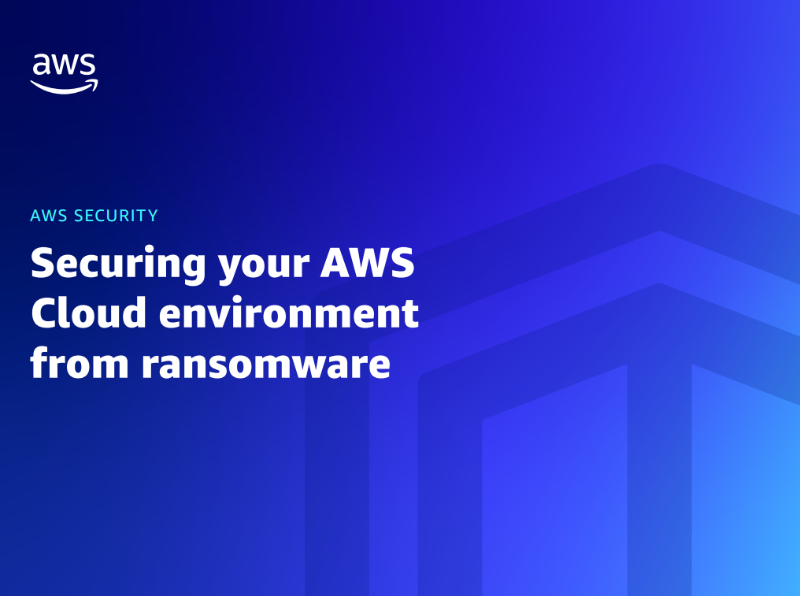Securing your AWS Cloud environment from ransomware
Published on 18 Aug 2023

Ransomware is a type of malware that encrypts a victim's files and demands a ransom payment in exchange for the decryption key. Ransomware attacks are becoming increasingly common, and they can have a devastating impact on businesses of all sizes.
The AWS Cloud can be a target for ransomware attacks, but there are several steps that organizations can take to protect themselves. Here are some best practices for securing your AWS Cloud environment from ransomware:
- Use strong passwords and multi-factor authentication. This is the first line of defense against ransomware attacks. Make sure that all of your AWS account passwords are strong and unique, and enable multi-factor authentication for all users.
- Keep your software up to date. Ransomware attackers often exploit known vulnerabilities in software to gain access to systems. Make sure that you keep all of your software up to date, including the operating system, web browsers, and applications.
- Segment your network. This will help to isolate infected systems and prevent ransomware from spreading. You can use AWS VPCs and security groups to segment your network.
- Use a firewall. A firewall can help to block unauthorized traffic from reaching your systems. You can use AWS WAF to protect your web applications from common attack vectors.
- Back up your data regularly. This will give you a way to restore your data if it is encrypted by ransomware. You can use AWS Backup to create backups of your data in the cloud.
- Use a cloud security posture management (CSPM) tool. A CSPM tool can help you to identify and remediate security misconfigurations in your AWS environment. This can help to prevent ransomware attacks from exploiting known vulnerabilities.
- Use a cloud intrusion detection system (IDS). A cloud IDS can help you to detect malicious traffic that is targeting your systems. You can use AWS GuardDuty to monitor your AWS environment for suspicious activity.
- Have a plan for responding to a ransomware attack. This plan should include steps for identifying and containing the attack, as well as steps for restoring your data.
By following these best practices, you can help to protect your AWS Cloud environment from ransomware attacks.
In addition to the above, here are some other things to keep in mind:
- Be aware of the latest ransomware threats. The threat landscape is constantly evolving, so it is important to stay up-to-date on the latest ransomware threats. You can do this by subscribing to security mailing lists and following security blogs and Twitter accounts.
- Train your employees on ransomware prevention. Your employees are your first line of defense against ransomware attacks. Make sure that they are aware of the risks of ransomware and how to avoid it. You can do this by providing them with security awareness training.
- Test your backup and recovery plan. It is important to test your backup and recovery plan regularly to make sure that it works as expected. This will help you to ensure that you can restore your data if it is encrypted by ransomware.
By following these best practices, you can help to protect your AWS Cloud environment from ransomware attacks. However, it is important to remember that no security measure is foolproof.
Download AWS's whitepaper to learn more about AWS Machine Learning Whitepaper only on Whitepapers Online.
